- Home
- slideshows
- miscellaneous
- The best eco-friendly mineral sunscreen you can buy
The best eco-friendly mineral sunscreen you can buy
The best mineral sunscreen overall

The best affordable mineral sunscreen
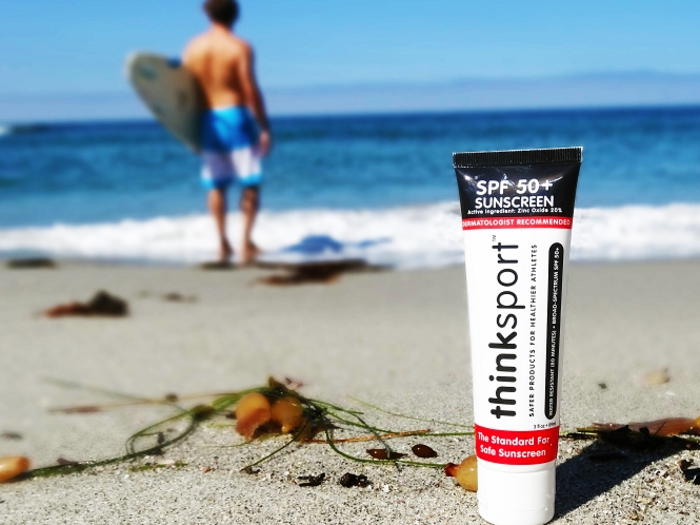
Zinc oxide and purified water are the main ingredients in Thinksport's Sunscreen, which is a great option for the hypoallergenic and eco-conscious buyer alike. Although it can leave you a bit pasty — as practically all mineral-based sunblocks do — it does eventually blend while still managing to offer superior UVA and UVB protection.
Amazon buyers gave it an average of 4.2 stars out of nearly 350 reviews, complimenting it on everything from its ability to blend, its high rating from the Environmental Working Group (EWG), and its affordable price per ounce. Some complain that it dries their skin out too much, which zinc oxide tends to do, and many others had trouble rubbing it in.
If you find blending zinc oxide into your skin to be a nuisance, you might go for Thinksport's Everyday Face, which comes with a natural tint and blends with most complexions. Just take care around clothes, car seats, or anything else you want to avoid staining, and to that end, it probably won't do too well in water.
We're also a big fan of Badger's array of sunscreens, especially for watersports — and the SPF 34 Anti Bug Sunscreen is my personal favorite, though I have no qualms about going outside looking like a streaky white mess.
Badger's sunscreen becomes especially handy where tropical, disease-ridden mosquitoes abound, but it's probably not for everyone. We're looking into other options, but this is a wonderful, industrial-strength option for deeper, buggier expeditions.
Pros: Affordable, superior protection, plastic-free container
Cons: Requires some effort to rub in
Buy Thinksport's SPF 50 sunscreen at Amazon for $17.99 Buy Badger's SPF 34 Anti Bug sunscreen on Amazon for $12.21 (originally $13.80)The best spray-on mineral sunscreen
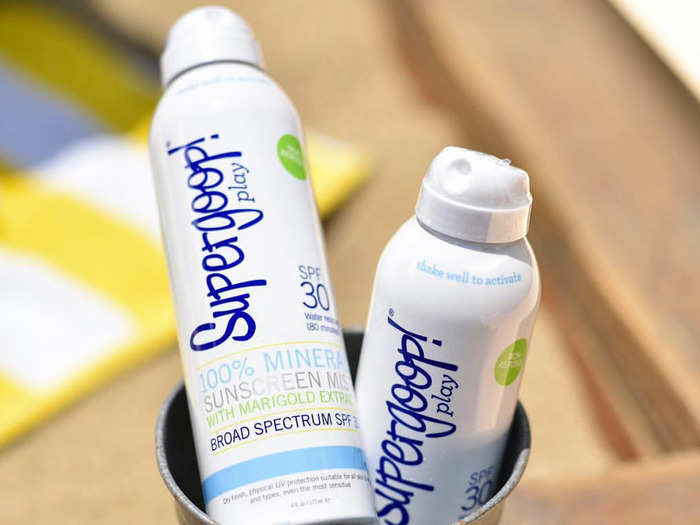
Generally speaking, spray-on sunscreens aren't the best because we tend to spray them on too thinly and miss spots entirely. Mineral sunscreens are even more troublesome because they don't tend to spray well in the first place, and often dry out to the point of becoming impossible to use.
Supergoop's Mineral Sunscreen Mist works fairly well, but it's light-duty, and while it rubs in with hardly any residue, it only contains 12% zinc oxide, which falls short of the recommended 18% (or more). Still, it's the best we've found.
Our previous pick, from Bare Republic, had a combination of 15% zinc oxide and 4.3% titanium dioxide, which seems just right, and spreads evenly, but still left a white cast. Then, over time, our samples suddenly began to thicken to the point of being nearly solid, and we couldn't get it to spread or rub in.
What you can do with Supergoop's Mineral Sunscreen Mist is vigilantly apply it frequently (maybe every hour) to make up for the lower SPF rating.
In the end, most of us aren't trying to look pasty on the plage, and we get that. Supergoop strikes a happy medium between how much people care about protecting their skin and putting themselves at risk for skin cancer, how much they don't want that white cast, and, of course, how much they want to look tan. The Huffington Post, The Strategist, and Glamour all love Supergoop for this reason. Give Supergoop a go, but make sure to reapply often.
Editor's note: We're in the process of testing and reviewing Supergoop's Play sunscreen, too, which comes with ample zinc oxide and a touch of titanium dioxide. We like it so far, and will report back soon. Read more about our findings so far at the bottom of this page.
Pros: Applies easily and cleanly, works fairly well
Cons: Expensive, not quite the recommended amount of active ingredients in most sunscreens
Buy Supergoop! Mineral Sunscreen Mist from Sephora for $34The best tinted mineral sunscreen
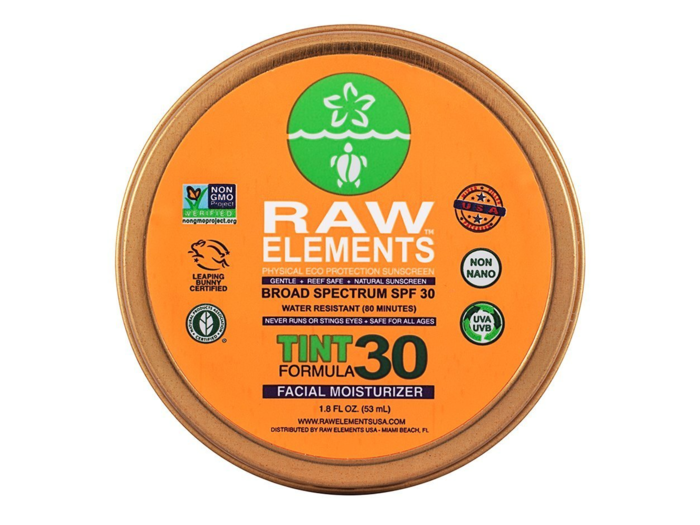
I haven't found any mineral-based sunscreens that apply sheerly, but I have, however, found a few options that come naturally tinted and seem to blend pretty well with a variety of skin tones, and my favorite so far is Raw Elements' Tinted Facial Moisturizer.
While it is definitely on the greasier side, it blends in better than any I've tried to date, so it ought to accommodate those who are understandably averse to showing up at the beach looking like The Friendly Ghost, but who still have an interest in keeping sunburn at bay. It also seems to serve as a decent foundation for makeup for some, but you'll want to apply it well ahead of anything you're planning on putting over it.
And, if tinted sunscreen isn't your thing, and you don't mind having a bleach-white face for a few minutes until your sunscreen soaks in (maybe about 20-40 minutes), I'd go with the Face & Body formula. I found that if you're not terribly careful with the tinted stuff, it can be quite messy.
As with most mineral-based sunscreens, this stuff clogged my pores and eventually made me break out, which, of course, is all part of a day or week in the life of testing an endless slurry of products on your behalf, dear reader.
But in all seriousness, as long as you make sure to wash mineral-based sunscreens off thoroughly — though it might require a brillo pad — you should be fine, and if you have especially sensitive or oily skin, a simple facial mask should take care of you. I like Mario Badescu's Drying Mask, which, ironically enough, is a tan-hued mineral-based paste not unlike the sunscreen you'd be asking it to remove.
I also went ahead and used Raw Elements' tinted paste on my neck, arms, and legs, and my skin might have taken on a sort of ashy-grey-orange tone at first, but it faded in short order, and I didn't burn at all.
Pros: Affordable, plastic-free container
Cons: Oily, can stain clothes, especially before it soaks in
Buy Raw Elements' Tinted Facial Moisturizer with SPF 30 on Amazon for $16.49 Buy Raw Elements' Face & Body Natural Sunscreen with SPF 30 on Amazon for $17.49The best mineral facial sunscreen for swimming and surfing
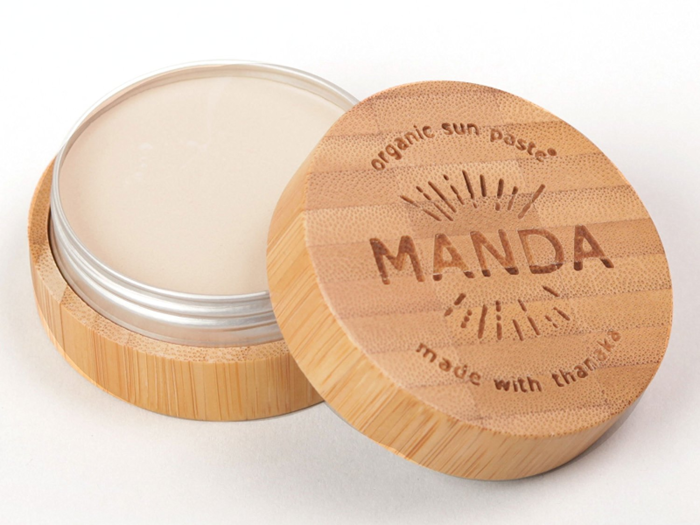
Most sunscreens, even the ones that claim water-resistance, wash off pretty quickly in the water, and especially in the surf. Surfers and swimmers need something that water won't ablate. Manda doesn't wash off, and to that point, doesn't run at all, so you shouldn't find it burning your eyes.
It also will not rub in, and if it does, you've probably spread it too thin, or at least beyond its optimal efficacy. For that reason, I wouldn't recommend it for running about town, but it works wonders for aquatic enthusiasts, as well as perspiring, landlubbing athletes who spend prolonged periods of time in intense and/or direct sunlight.
The short list of early Amazon reviews for this somewhat new product sing its praise for withstanding the harshest of equatorial climes, and surf-centric blog The Inertia raved about it too.
And while khaki/beige might not be the most flattering hue to smear over any shade of human flesh, it sure beats ghost white or atomic orange. Although Manda's 20% concentration of zinc oxide can simultaneously dry out your skin and clog your pores, Manda has taken the unique step to include what might be the oldest sunscreen known to humankind.
Thanaka, the mustard-yellow paste that gives Manda its tint, is made from a small, shrubby, southeast Asian tree by the same name, and was made popular over two millennia ago in Myanmar for a bevvy of dermatological reasons.
Apart from being a mildly effective natural sunscreen, thanaka is a regenerative antioxidant and an anti-bacterial, anti-fungal moisturizer that is also regularly used by the Burmese to treat acne. Further, it's likely that it inhibits the enzyme tyrosine's production of melanin, which might help reduce the development of melanoma and even brighten your complexion — not that it needs brightening.
This sunscreen — weirdly — is also entirely food-safe. I personally tested that claim, and may or may not have reached for seconds.
Pros: Familiar, all-natural, and food-safe ingredients
Cons: Expensive (but not bad if you only use it on your face)
Buy Manda SPF 50 Organic Sun Paste with Thanaka on Thrive Market for $28How to choose a mineral sunscreen that's safe for the environment
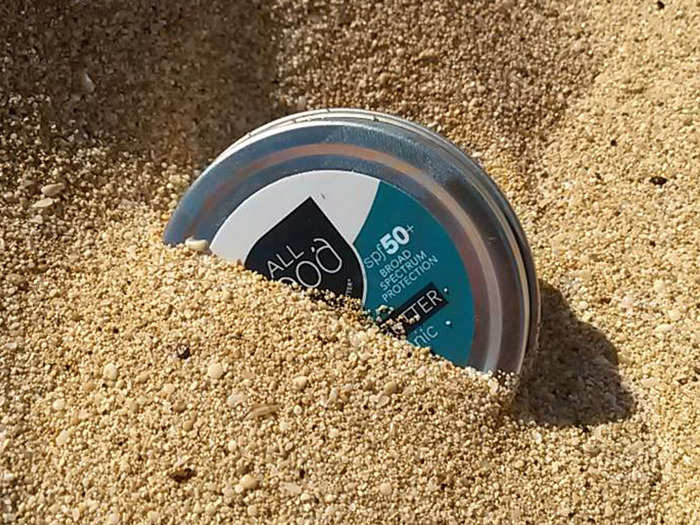
While zinc oxide and titanium dioxide have been researched, tested, and mostly endorsed as reasonably safe sunscreen ingredients for many decades, the jury is still largely out on the active organic compounds used in chemical sunscreens, which are considerably younger.
Although mineral-based sunscreens are preferable because they have been tested extensively and deemed largely safe for people and the environment, they are not entirely free from controversy, either.
Zinc oxide and titanium dioxide are powders that can be manufactured as ultra-fine nanoparticles (measured in nanometers, or billionths of a meter), which allow these thick sunscreens to go on sheerly without leaving a white residue, and appear to be harming reefs, too. Plus, as with most powders, they're also potential respiratory toxins in high enough concentrations.
NPR reported in 2015 on a study published in the journal "Archives of Environmental Contamination and Toxicology," which estimated that some 6,000-14,000 tons of sunscreen end up lathering coral reefs worldwide every year. This past year, forensic ecotoxicologist Craig Downs, Ph.D., told Vogue to look for products with "non-nano" ingredients larger than 150 nanometers, at which size their toxicity level to sea creatures — and you, as a respiratory threat in spray-ons — becomes minute.
Navigating the retail market with this information can be tricky. Terms that suggest environmental and social responsibility like "reef-safe" and "non-nano" are largely, if not entirely unregulated, so take them with a grain of salt, and do your best to find brands that support these claims. We will, too.
Popular Right Now
Advertisement